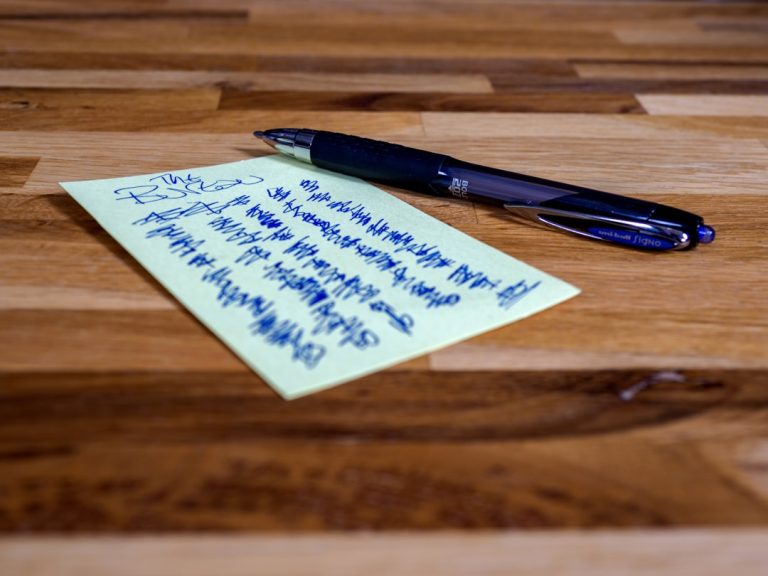Deep work. The holy grail of productivity, where you dive into cognitively demanding tasks without distraction. It’s where real progress happens, where complex problems are solved, and where creativity flourishes. But let’s be honest: maintaining that intense focus, hour after hour, can feel like an uphill battle. The sheer mental effort can be draining, and without immediate gratification, motivation often wanes. I used to struggle with this, feeling the pull of distraction or the creeping doubt that I wasn’t making enough headway, even when I was. That was until I discovered a simple, yet profoundly powerful tool: my “done list.”
Forget the traditional to-do list for a moment. While essential for planning, it often highlights everything you *haven’t* done yet, which can be demotivating during a long, arduous deep work session. My “done list” flips this script entirely. It’s not about what’s ahead, but about what’s behind me – the tangible evidence of effort and accomplishment. This isn’t just a record; it’s a dynamic fuel source that keeps my internal motivation burning bright, even when the work feels relentless. Let me walk you through how this simple shift transformed my deep work sessions.
The Invisible Wall: Why Deep Work Needs a Visible Win Counter
Deep work, by its very nature, often lacks immediate feedback. You’re not always checking off dozens of small, satisfying tasks. Instead, you might be wrestling with a single, massive problem, writing a complex report, or coding an intricate feature for hours. The progress is often internal, conceptual, and therefore, invisible. This invisible progress creates what I call “the invisible wall” – a psychological barrier that makes you feel stuck, even when you’re diligently working. Your brain craves rewards, those little hits of dopamine that come from achieving something. Without them, it’s easy to feel drained and wonder if your effort is truly paying off.
Shifting Focus from What’s Left to What’s Achieved
A traditional to-do list, while a fantastic organizational tool, can inadvertently reinforce this feeling of being stuck during deep work. You look at it, and all you see is a daunting mountain of tasks still awaiting your attention. This can lead to cognitive overload and a sense of being overwhelmed, which are antithetical to sustained focus. My “done list” acts as a powerful counter-narrative. Instead of dwelling on the unfinished, it forces me to acknowledge and appreciate the finished. This simple shift in perspective is profound. It moves my mind from a deficit mindset (“I still have so much to do”) to an abundance mindset (“Look at all I’ve accomplished!”). This mental reframing is key to maintaining motivation.
The Dopamine Hit of the Checked Box
There’s a well-documented cognitive science behind motivation, and a big part of it involves the brain’s reward system, particularly the release of dopamine. Every time you complete a task, no matter how small, your brain releases a tiny burst of dopamine, giving you a feeling of satisfaction and encouraging you to continue. During deep work, these dopamine hits can be scarce. A “done list” provides a structured way to inject these crucial rewards into my workflow. Every item I add to that list, every checkmark, is a mini-celebration, a tangible signal to my brain that I am making progress. This isn’t just a mental trick; it’s leveraging my brain’s natural reward mechanisms to sustain my drive.
My Ritual of Recognition: Building the “Done List” Habit
Implementing my “done list” isn’t just about jotting things down; it’s a deliberate ritual that I’ve integrated into my deep work practice. It’s a moment of pause, recognition, and subtle celebration that breaks up the intense focus just enough to refresh my mind without derailing it.

Choosing the Right Medium for My Deep Work Flow
For me, the “done list” needs to be accessible but not distracting. I’ve experimented with various mediums. Initially, I used a dedicated notebook, physically writing down each completed item. There’s something undeniably satisfying about the pen-on-paper act. More recently, I’ve shifted to a simple digital document or a dedicated section in my note-taking app (like Notion or Obsidian). The key is that it’s separate from my main to-do list, which is often cluttered with future tasks. My “done list” is a pristine space for accomplishments only. This separation ensures that when I glance at it, I’m not reminded of what’s still pending, but solely of what’s been conquered.
Dissecting Tasks into “Done-able” Segments
This is perhaps the most crucial aspect of my “done list” strategy for deep work. Deep work tasks are often large and amorphous. “Write report” is too big. “Develop feature X” is too vague. To make the “done list” effective, I break down these monumental tasks into smaller, distinct, and truly “done-able” segments. For example, instead of “Write blog post,” my deep work session might involve:
- Outline main sections for the blog post
- Draft introduction paragraph
- Research 3 external link sources
- Write first H2 section (The Invisible Wall)
- Draft a compelling meta description
Riding the Momentum Wave: How My Done List Prevents Burnout
Deep work can be a marathon, not a sprint. Without proper pacing and psychological support, it’s easy to hit a wall of exhaustion or succumb to the dreaded mid-session slump. My “done list” acts as a personal cheering squad, a visual representation of momentum that keeps me pushing forward even when my energy starts to flag.
Overcoming the Mid-Session Slump
We’ve all been there: an hour or two into a deep work session, and suddenly your brain feels foggy, your eyes wander, and the temptation to check social media becomes overwhelming. This is where my “done list” truly shines. Instead of giving in to the distraction, I take a quick glance at my list. Seeing “Draft introduction,” “Researched sources,” “Outlined main points” all neatly checked off provides an instant shot of encouragement. It reminds me of the significant mental energy I’ve already invested and the tangible output I’ve produced. This visual proof of progress re-ignites my resolve and helps me push through that critical slump, often leading to a renewed burst of focus.
A Visual Reminder of Effort and Progress
The cumulative effect of a “done list” is incredibly powerful. By the end of a multi-hour deep work block, I might have 5, 7, or even 10 items on that list. Looking at the sheer volume of completed work is immensely satisfying. It validates my effort and assures me that my time was well spent. This isn’t just about feeling good; it’s about building self-efficacy and confidence. It reinforces the belief that I *can* sustain deep work, and that my efforts *do* yield results. This positive feedback loop is essential for mastering deep work over the long term, preventing the feeling of being perpetually stuck on a treadmill.
Beyond Simple Checks: Optimizing My “Done List” for Peak Drive
My “done list” isn’t a static tool; it’s something I’ve continually refined to maximize its motivational impact. It’s about more than just ticking boxes; it’s about using those checks to understand my workflow better and to consciously fuel my next deep work session.
The Power of Specificity in My Accomplishments
Early on, I’


